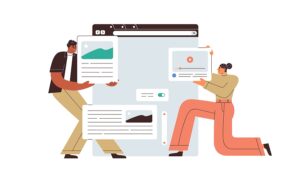Codeias is used to treat mild-to-moderate types of development pain.
6 Steps For A Website Re-design
- By Sarah
- General News
- 1380 Views
- 24th September 2022
Even the best designed websites can benefit from some tweaks and upgrades every now and then. Visuals and text can become dated, pages can sprawl, and new technologies may have come onto the market. To help keep your site efficient and competitive, it really pays to keep it looking great and as user friendly as possible.
Here are the steps you need to take to redesign your website, so that it makes a great first impression, and reassures your existing customers that you are a forward-thinking business with your eye on the ball.
Set out your goals
The first step is to identify what your goals are. Has the purpose of the website changed in any fundamental, or even subtle, way, since it was first designed and built? Has the nature of the business or organisation changed or evolved over time, and does the website need to reflect this?
What are you aiming to achieve through the redesign- to generate more sales, improve your SEO, or to bring the look and feel of the site more in line with competitors, or modern trends? It might be a combination of all of these things.

Review the existing content
Carry out a site audit, to assess the strengths and weaknesses of its current performance. If you don’t already use tools such as Google Analytics, now is a very good time to start. This will give you detailed information about who is visiting your site, how they are finding it, which pages are getting the most traffic, and so on.
Work out the structure
Based off everything you have identified in the first two steps, draw up a preliminary site map which outlines all the pages and main navigation options. This will really help you focus on the user experience, to make sure that your most popular and relevant pages are easy to find, preferably within just one or two clicks.
You may find that you can combine some existing pages to streamline the whole feel of the site, or get rid of some pages altogether. On the other hand, if your business has grown rapidly, some of the content may need breaking down into separate pages.
Develop a content strategy
Good content is essential to help your site rank highly in SEO, and provide a professional and reassuring image for customers. Make sure that all the written content is consistent with your brand messaging in style and tone.
Keep the copy simple and to the point on the main pages. Make sure that the content on each page is optimised with one or two of your priority keywords.
Refresh the visuals
When you have got the information architecture and content nailed down, it’s time for the aesthetics. When considering typography, colour palettes, imagery, and so on, you will want to make sure they are in line with your brand image, and the overall impression you want to make on visitors.
Get building
It’s time to translate all your hard work into code. If you have the time and skills, you can build a custom site, or use a WordPress platform. If you would like some help with white label web development, please get in touch with us to see how we can help.









